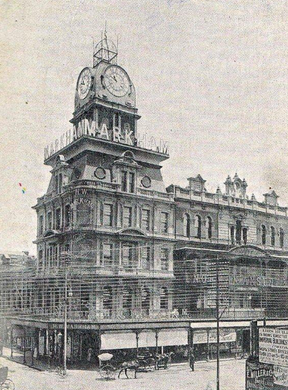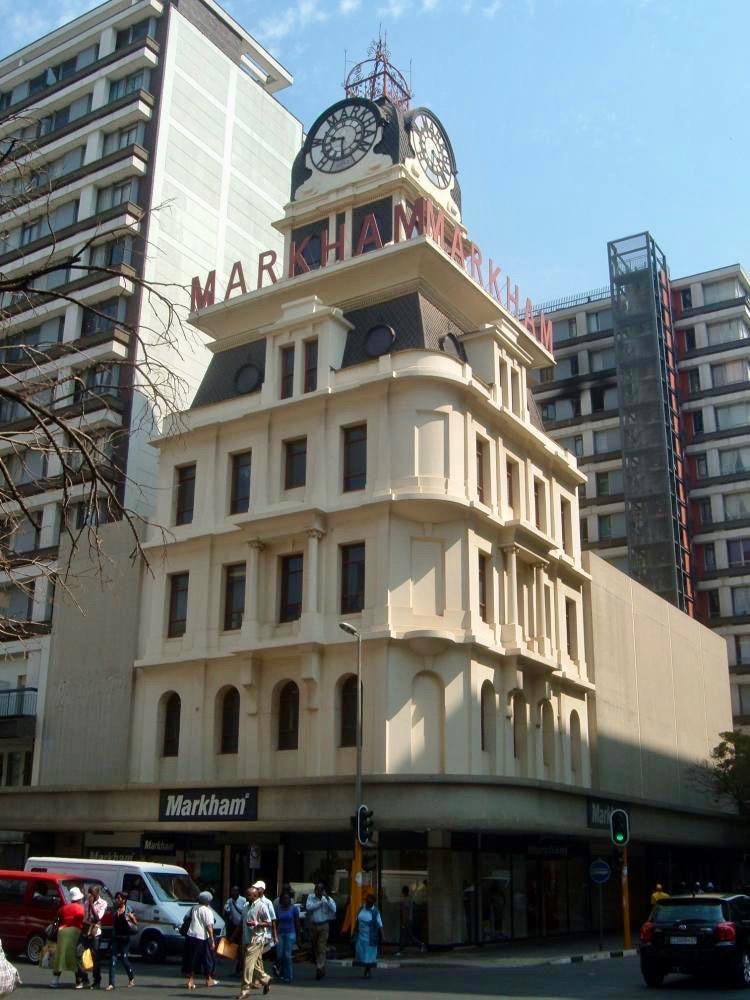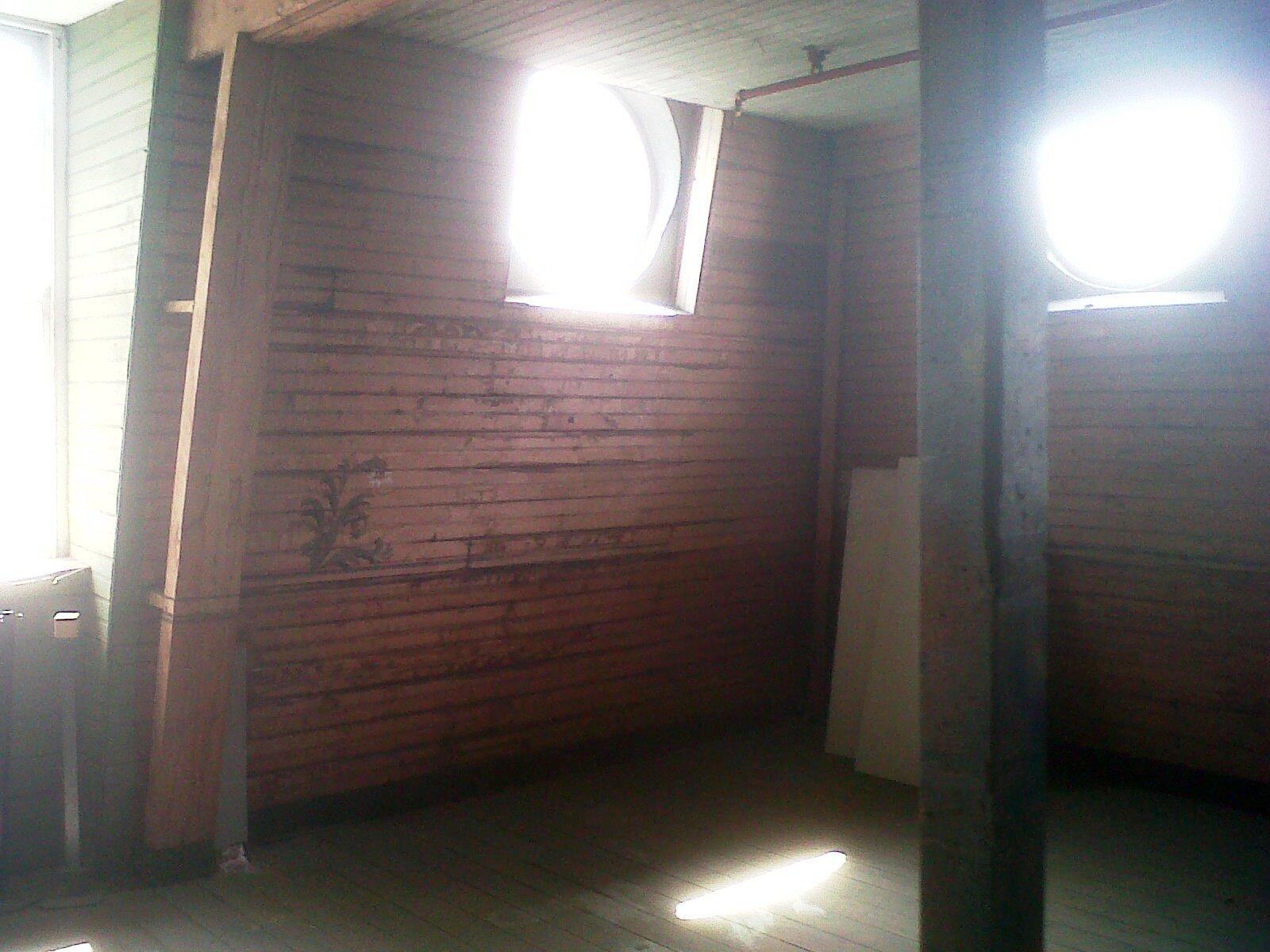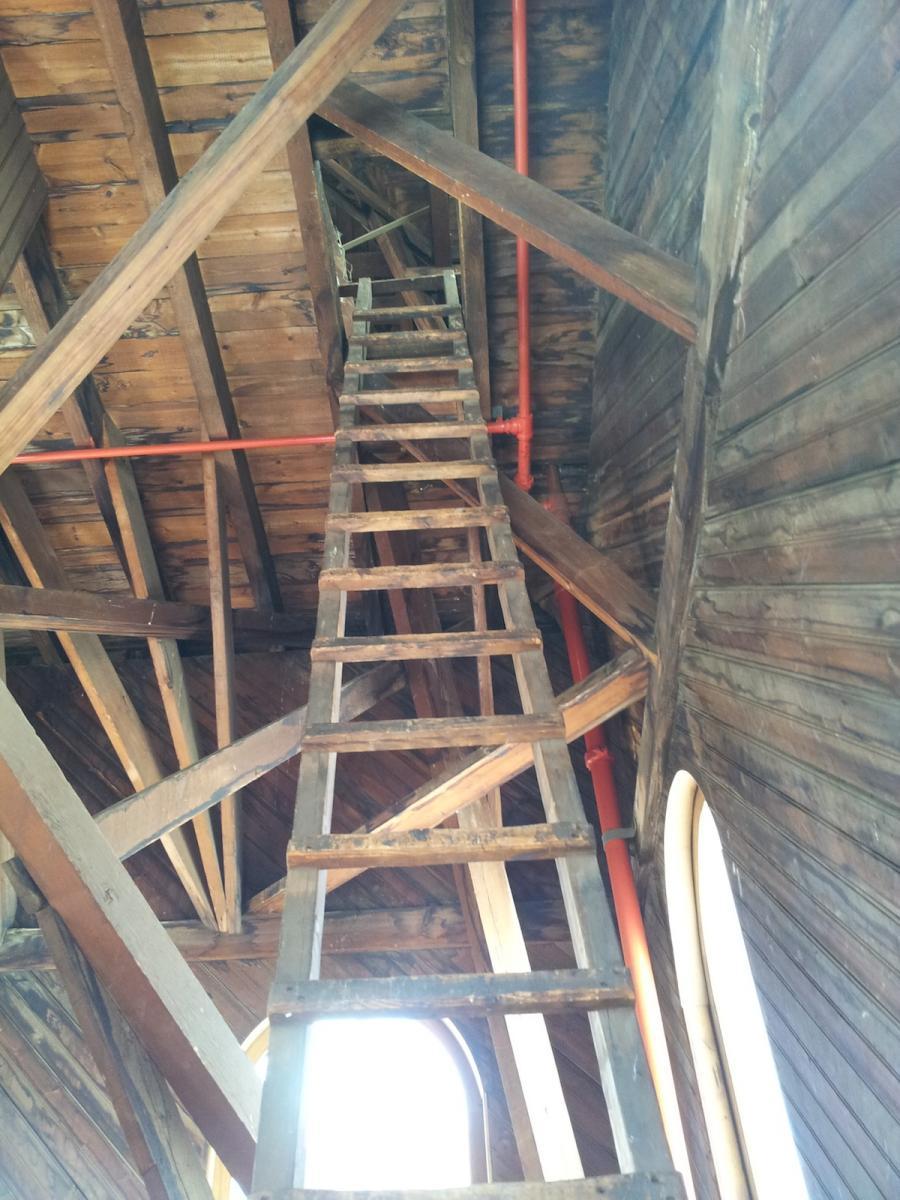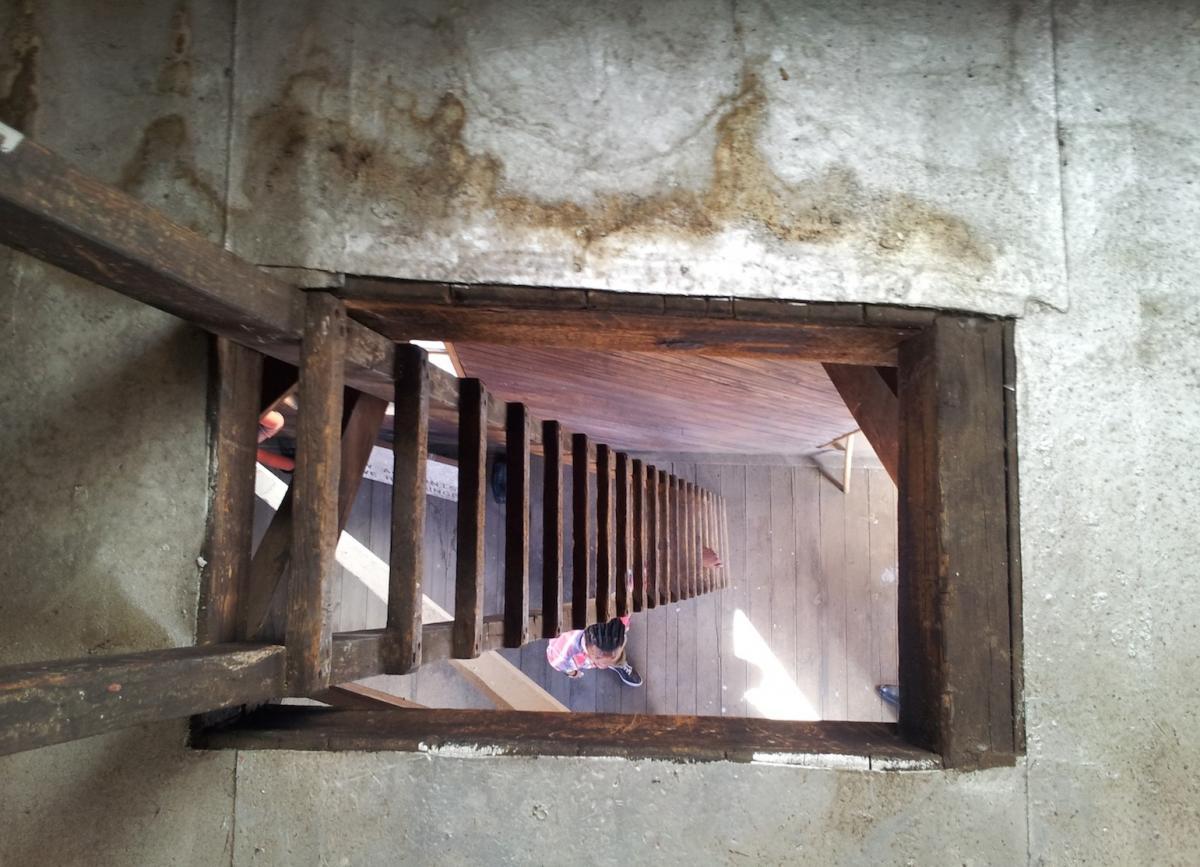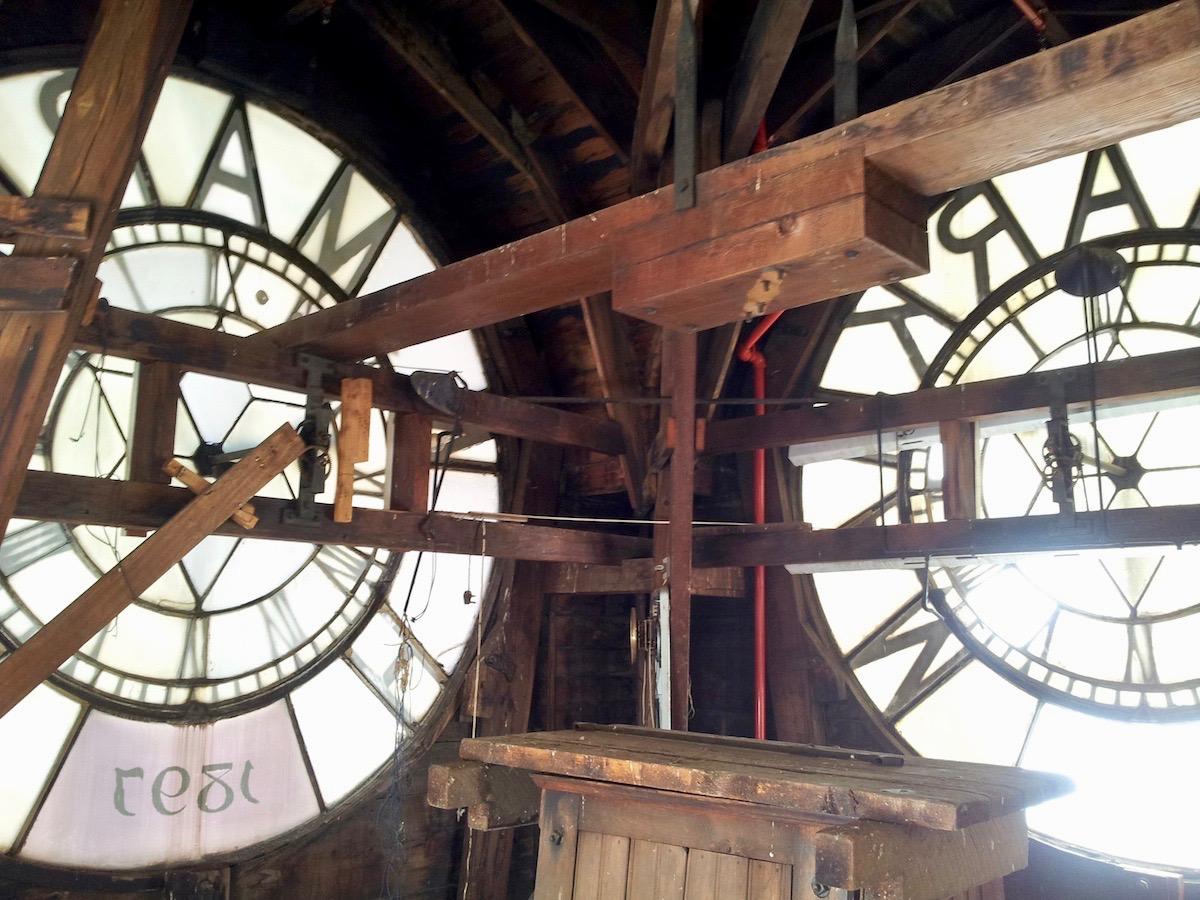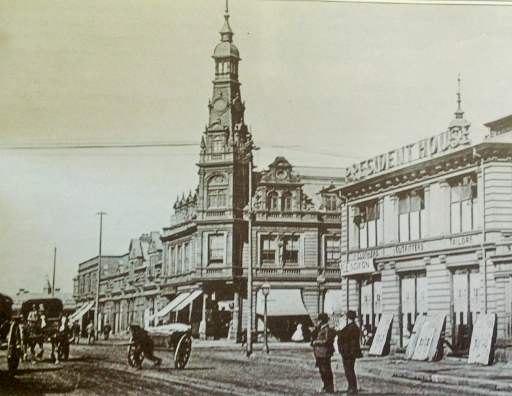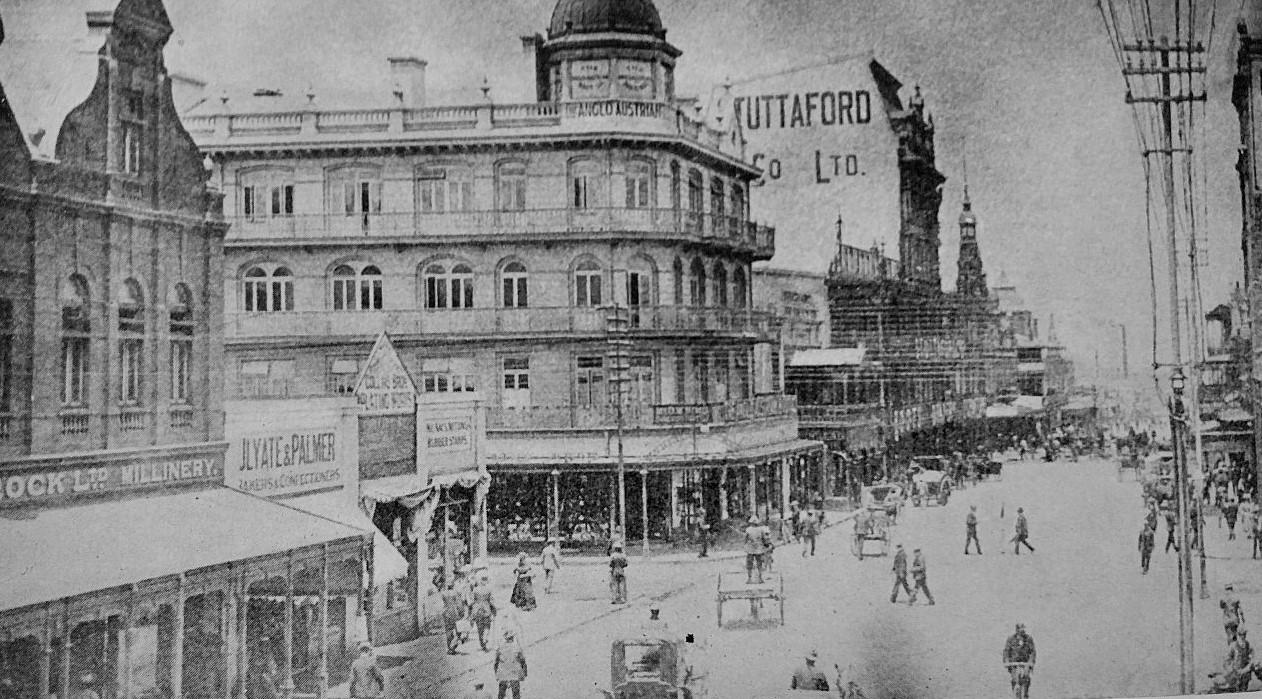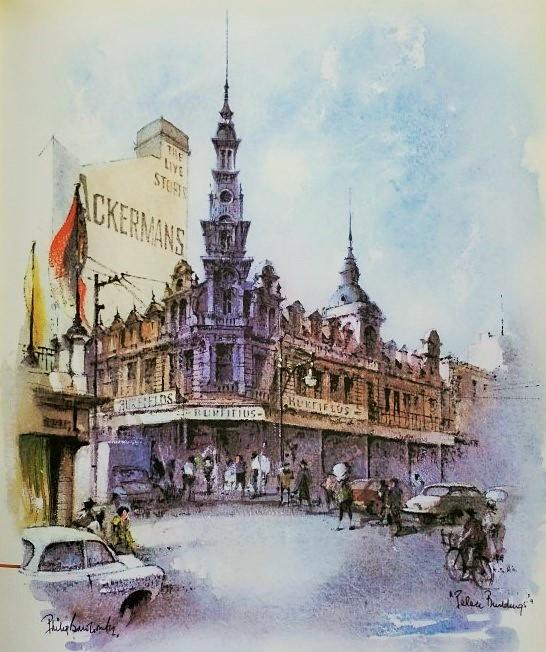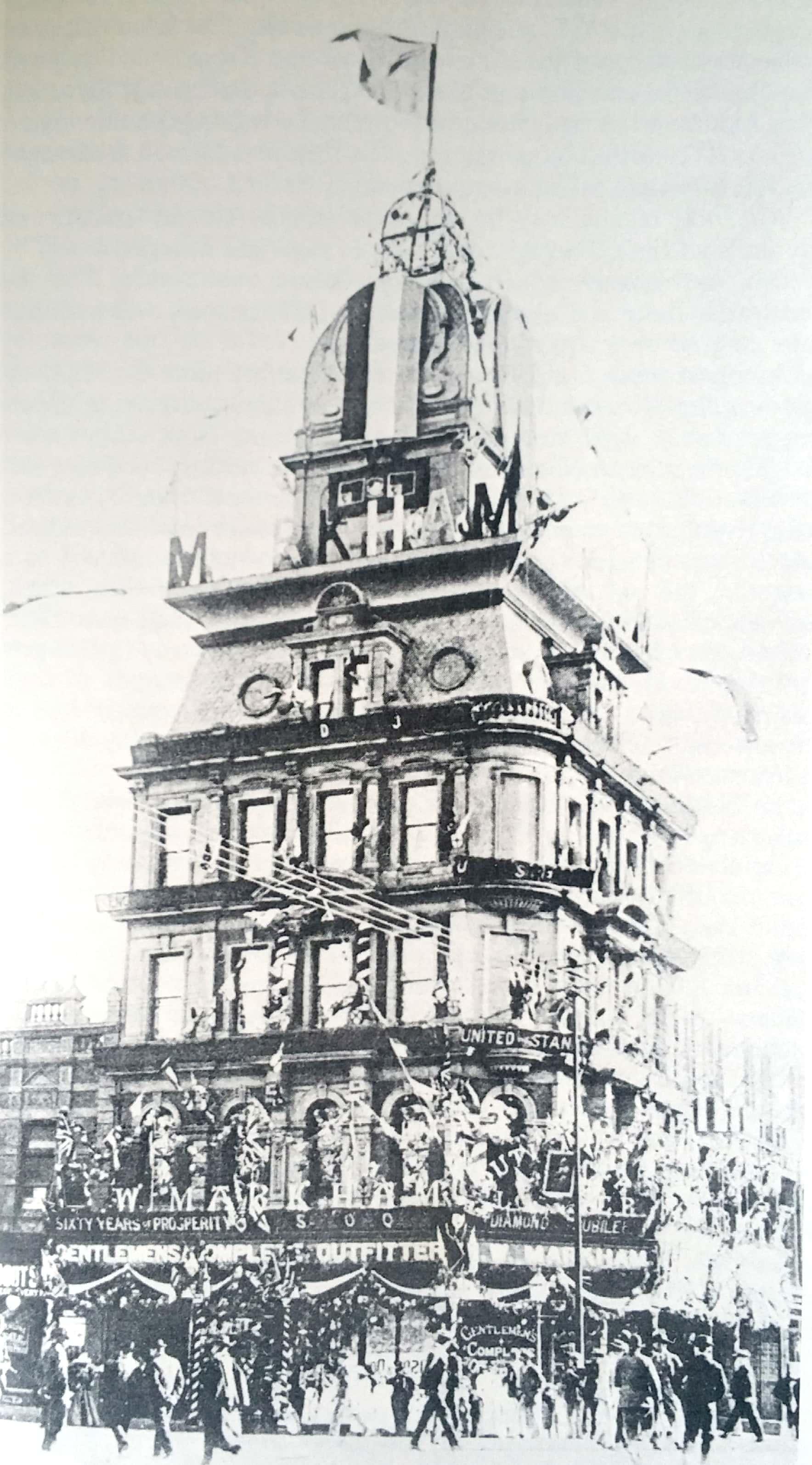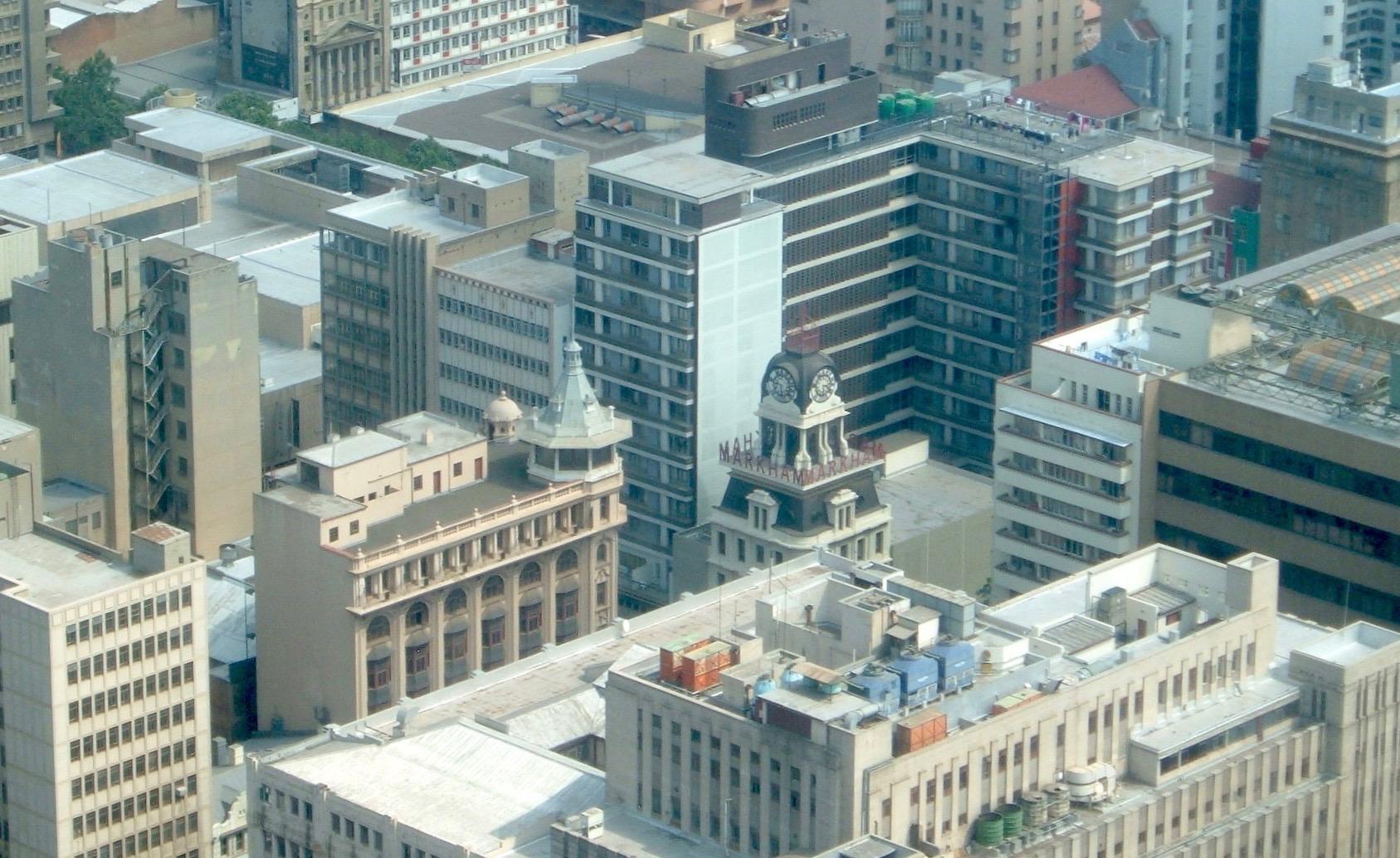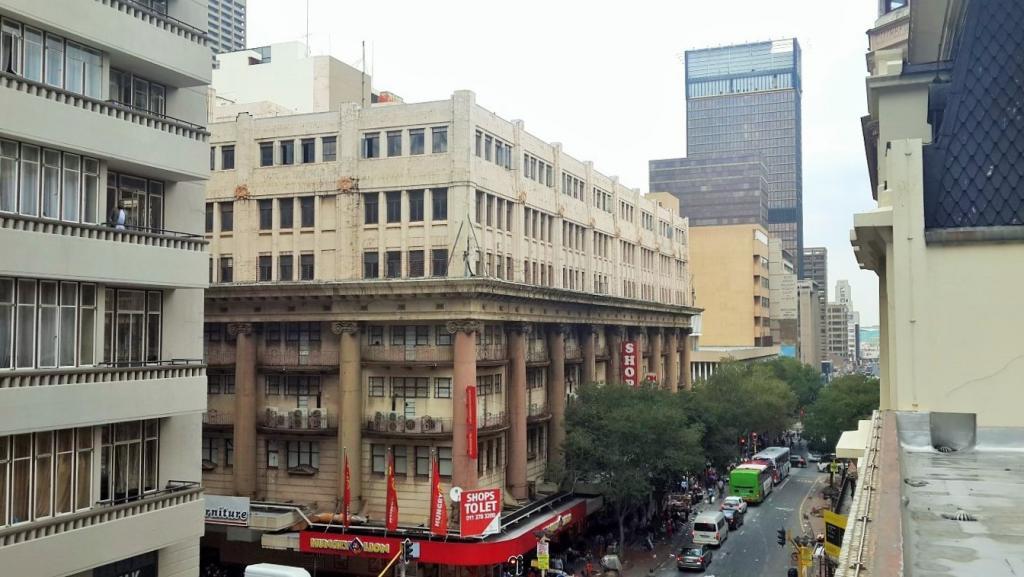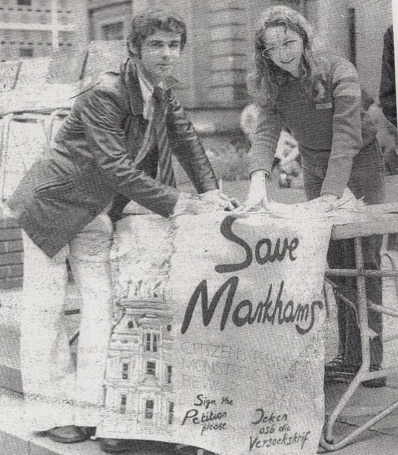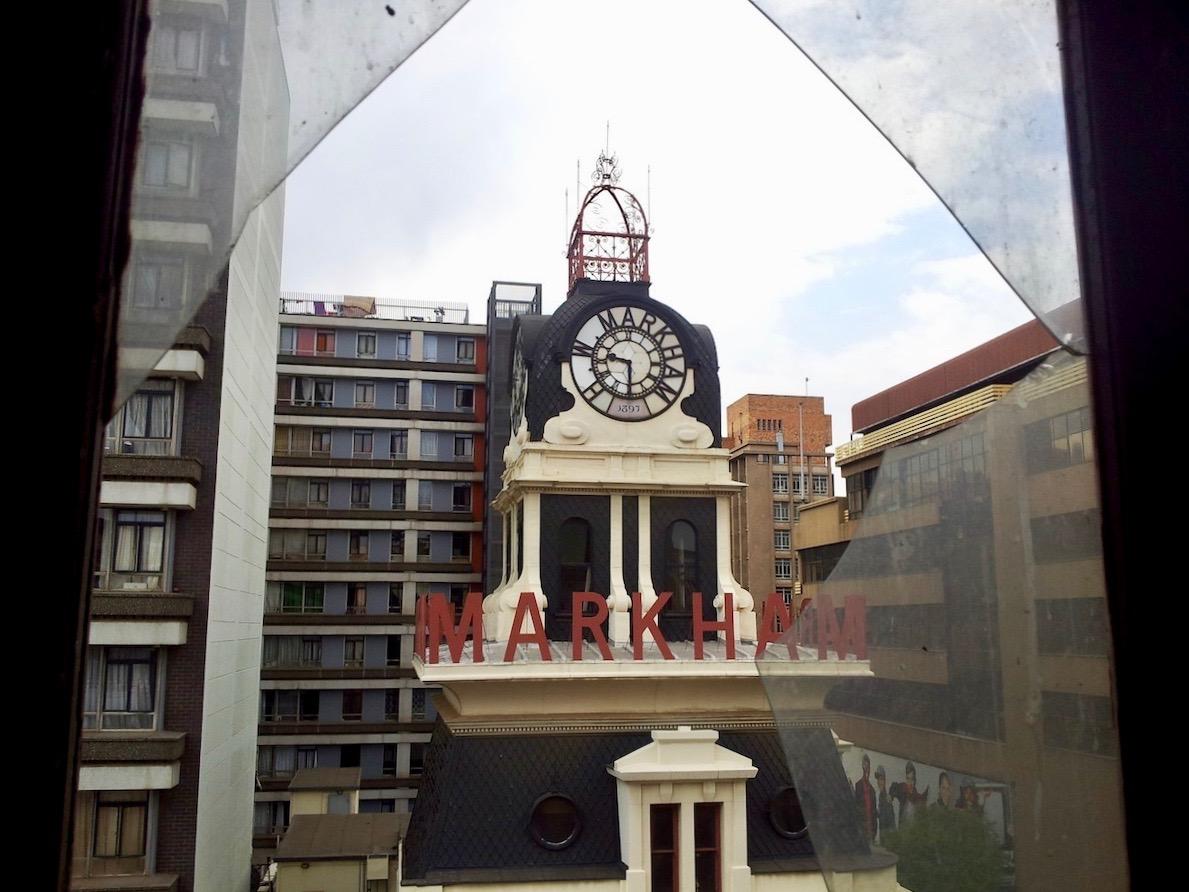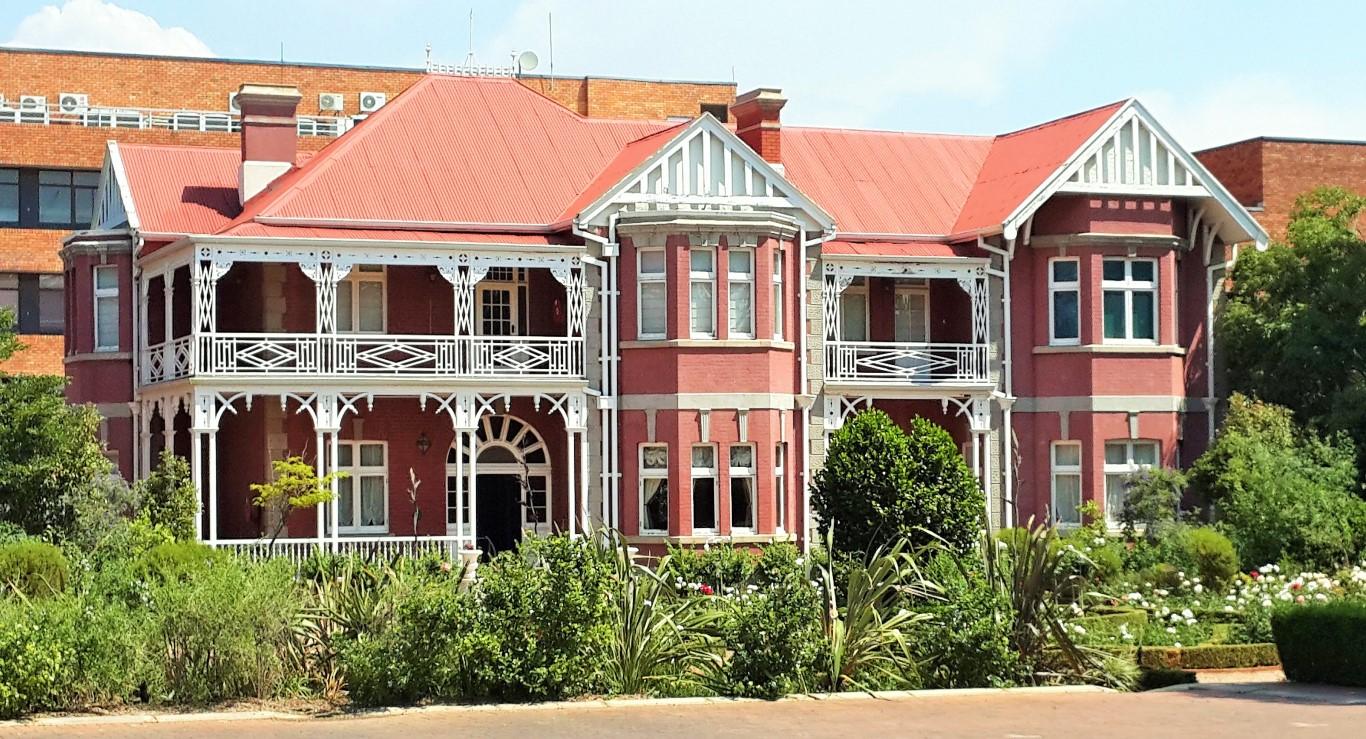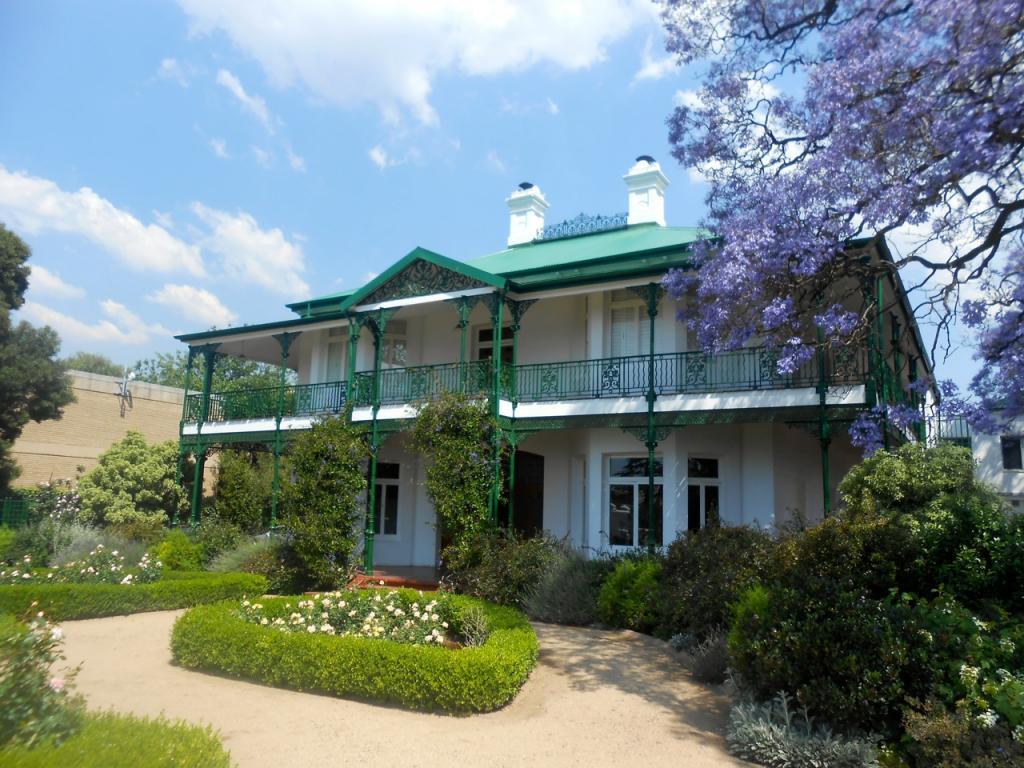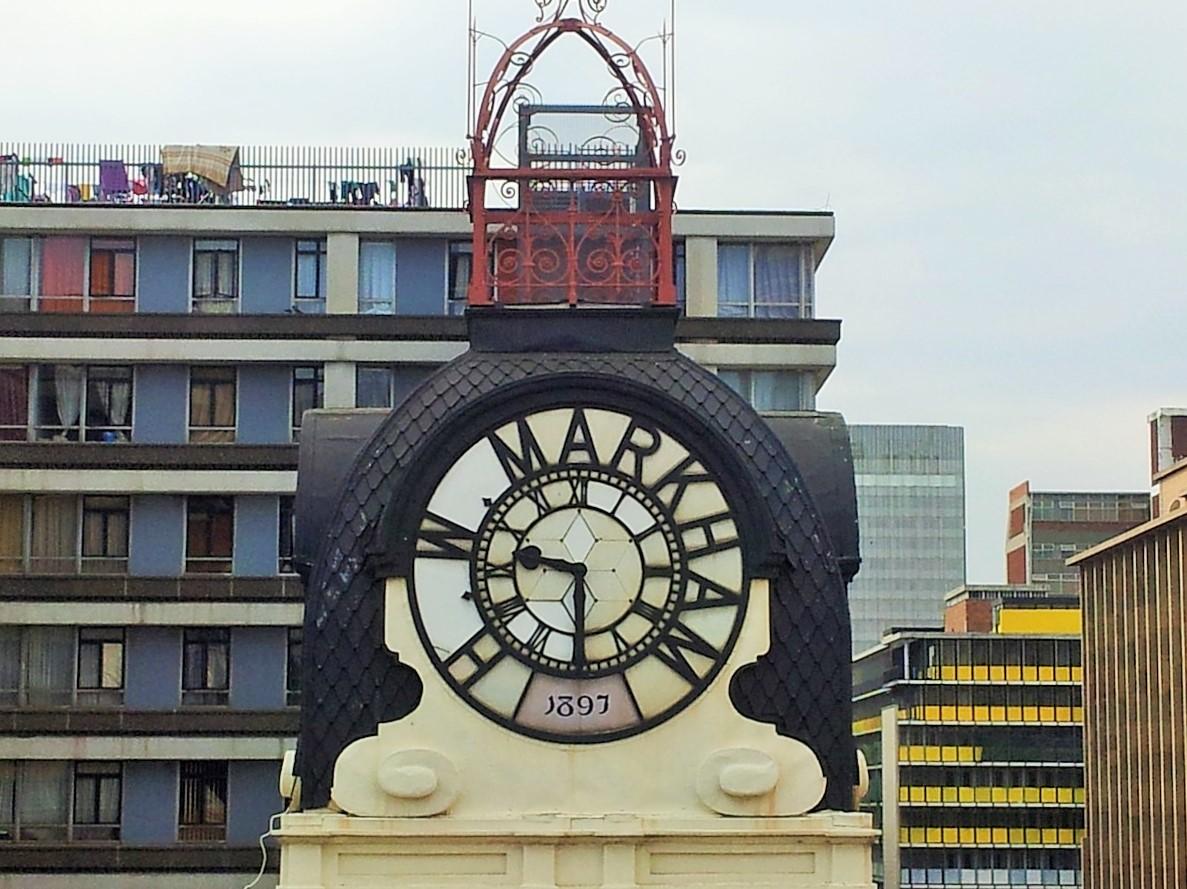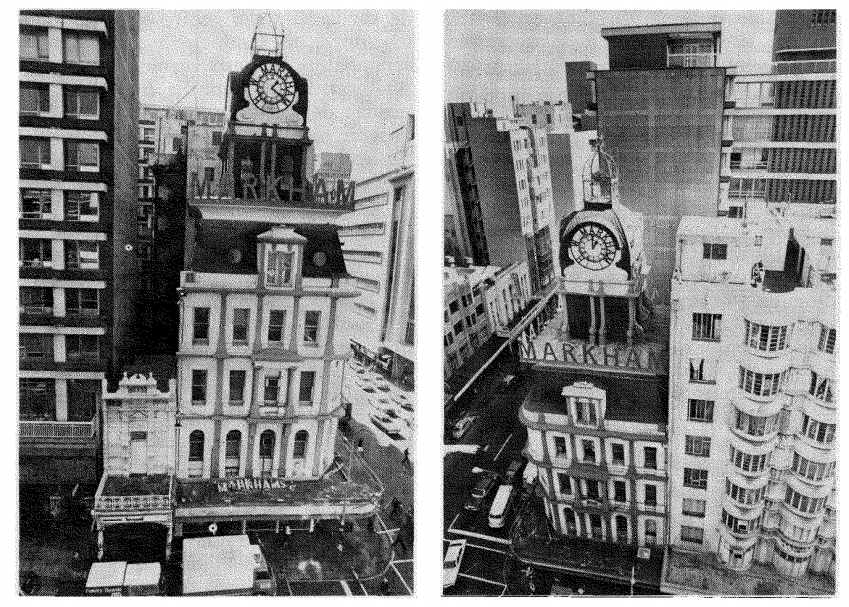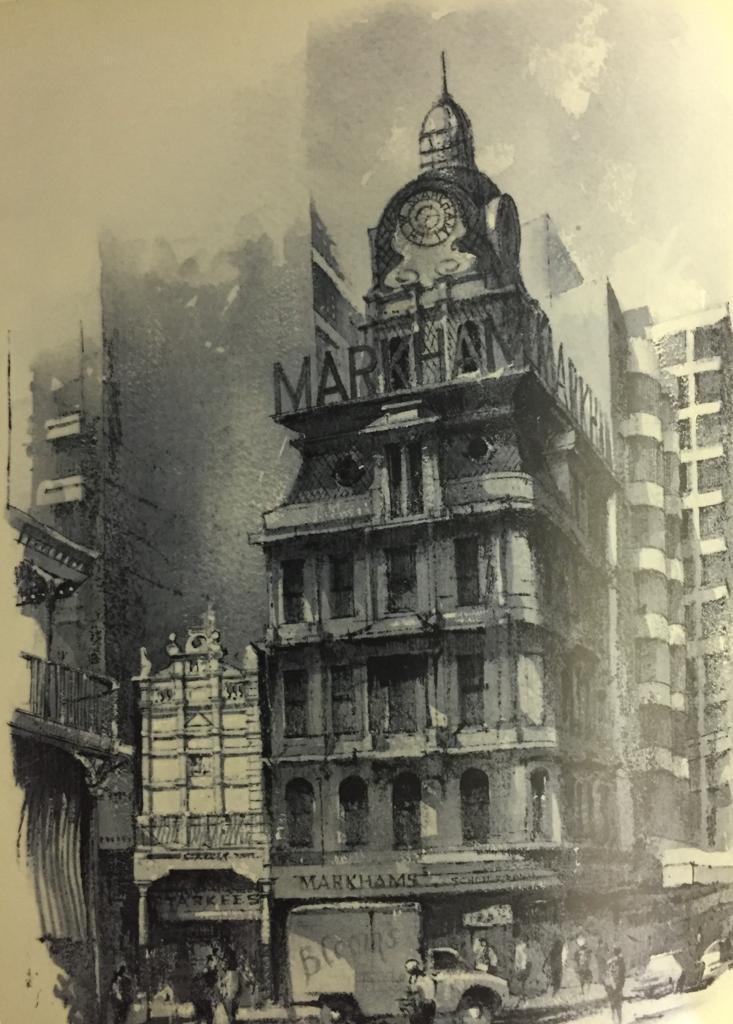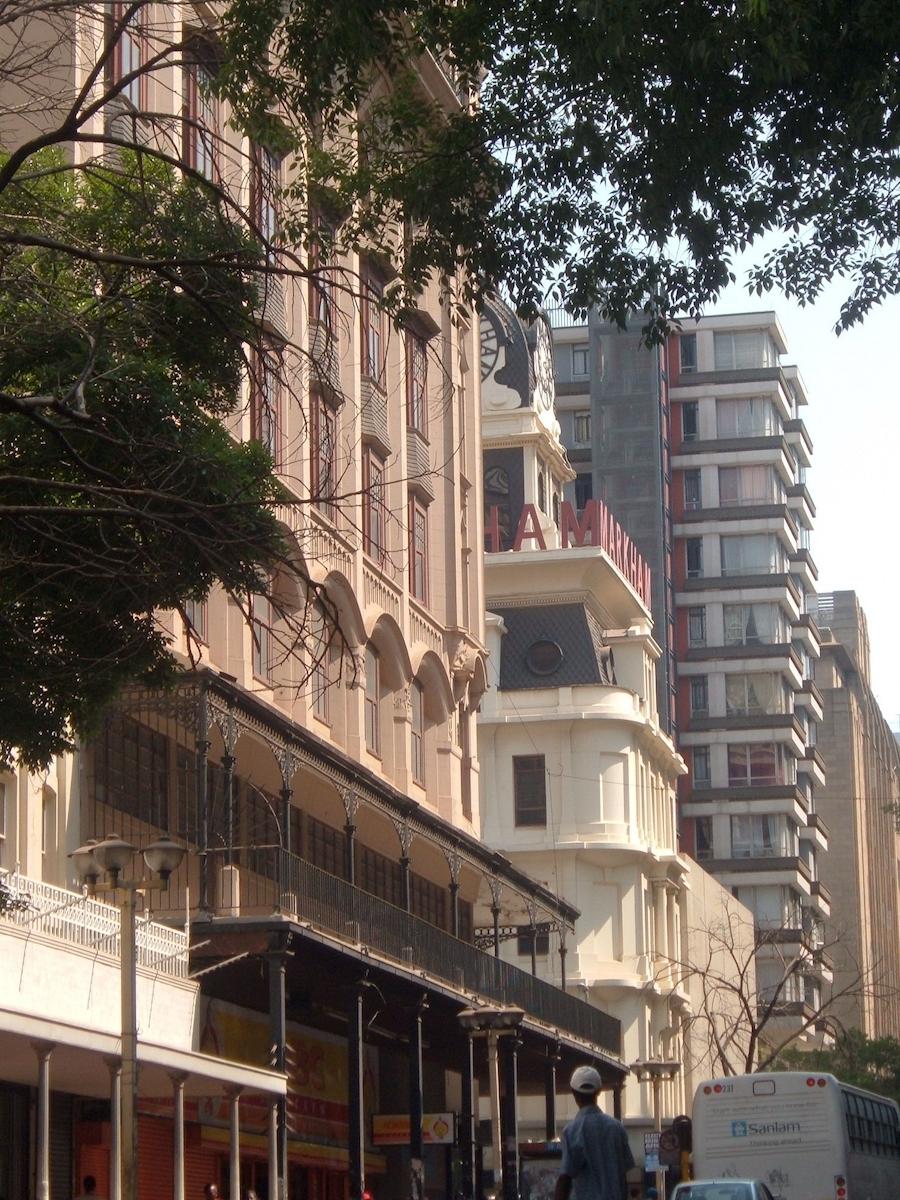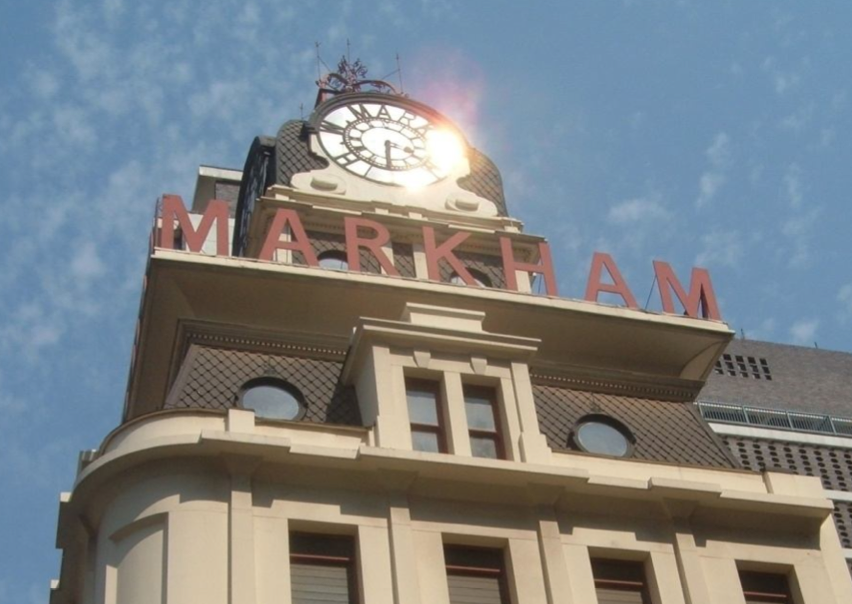
Disclaimer: Any views expressed by individuals and organisations are their own and do not in any way represent the views of The Heritage Portal. If you find any mistakes or historical inaccuracies, please contact the editor.
In the article below, well known journalist Lucille Davie tells the epic story of the battle to save the Markhams Building from demolition in the late 1970s. The piece was first published on the City of Joburg's website on 15 February 2012. Click here to view more of Davie's work.
The Markhams building in the CBD and Alexandra township have an unlikely person in common: both were saved from destruction by cabinet minister Dr Piet Koornhof.
He saved Alexandra from being flattened in 1979, with the help of reverend Sam Buti, and in the same year, he helped save Markhams from demolition.
Buti, who initiated and drove the Save Alex Campaign in the late 1970s, and Koornhof, minister of co-operation and development in the apartheid government, were friends because their fathers were both ministers in the Dutch Reformed Church in the Free State. Buti could phone Koornhof any time and speak to him in Afrikaans.
The Markhams building, once so tall in the town that residents living in Hillbrow and Braamfontein would read the time on its clock tower, is one of Joburg’s gems, recalling an era when shopping was a very different experience.
Early photo of Markhams
In the late 1970s the Foschini Group bought Markhams and two adjoining buildings on the corner of Eloff and Pritchard streets in the CBD. They submitted plans for a new building consisting of shops and offices, which would entail the demolition of the historic building and its two neighbours.
“The people of Johannesburg were incensed and over a period of approximately nine months an intense battle raged to decide the future of the building,” states James Ball in his thesis entitled “The Battle for Markhams – Why did the Markhams building survive the Foschini Group’s re-development plans in the late 1970s”.
It took lengthy negotiations and a “memorable compromise” before the building was saved from demolition, writes Ball.
A recent shot of Markhams (The Heritage Portal)
Exclusive men’s outfitters
Markhams was an exclusive men’s outfitters, offering personal service to the gentlemen of the town, fitting or altering suits with a team of tailors sitting at sewing machines in its basement. It had two floors of exclusive wear, and if they didn’t have the desired item, customers were sent down Eloff Street to Man about Town, a wholesaler that stocked a wider range of suits, says 60-year-old Isiah Nkosi, who has been a salesman at Markhams for the past 30 years.
A Markhams employee was sent down to fetch the suit and any alterations were sized and made for the customer, says Nkosi, once the suit was back at Markhams.
He remembers the store with wooden floors and wood-panelled walls, with wooden stands holding items like shoes. Portions of those wooden floors can still be seen. The ceilings were mirrored for the full appreciation of the suit. In those days customers consisted mainly of bank employees, the most important of whom got VIP customer cards.
Nkosi, who used to work at John Orr’s across the road, says of his job: “I like to serve, to deal with people – it makes me feel younger and younger. My goal is to give good customer service.” And, of course, he likes fashion.
Manager Thandi Seffore says that personal service is still the Markham trademark. When a customer walks in they are made to feel special. She says that Markham has several competitive advantages: it offers its 75 percent youth market exactly what they want - skinny-fit jeans, shirts and jackets. This doesn’t mean it doesn’t cater for its older clientele – it still carries the wider fit in these items.
Historic building
Seffore and her assistant manager, Tina Kgabude, take me on a tour of the historic building. The first two floors remain as they have always been – racks of neatly stacked trousers, shirts, jackets, t-shirts, shoes and the ubiquitous jeans.
The basement is a large empty space, with a sad old sewing machine sitting in a corner, a reminder of days gone. We take the lift to the third floor, now housing offices and store rooms. The fourth floor is largely empty.
The fifth floor gives an impression of the workmanship that was used in the construction of the building. The walls, floors and ceiling are wood-panelled, with delicate painted leaf shapes on some of the walls. The walls are angled, with several porthole windows. We take a steep staircase to the sixth floor, walking among the wooden rafters and arched wooden windows of the building.
The 5th floor (The Heritage Portal)
The iconic red metal signs of Markham, one of each side of the building, can be seen through the dusty windows. An almost vertical tall ladder leads up to the bell tower where the four glass clock faces stare out at the city’s residents, as they have done for the past 114 years.
The ladder is too vertical and a little too wobbly, so I don’t make it to the final floor, the soul of this lovely building. But the large clock faces are visible from the floor below, still in good condition.
Seffore says: “When I get bored, I go up and look at the view of the city from here.”
Markhams ladder from below (The Heritage Portal)
Markhams ladder from above (The Heritage Portal)
Inside the clock tower (The Heritage Portal)
Eloff Street
Eloff Street was the shopping heart of the growing town. It led up from Park Station, on the way to Market Square, the present Beyers Naude Square. Residents would take a short cut either through President or Pritchard streets. But in time Pritchard Street became the preferred shortcut because of the Palace Building on the corner of Pritchard and Rissik streets, records Ball.
Built in 1889, the Palace Building was the tallest building in the town at the time, dominating the skyline. It was a much-loved building: “It was by far the most imposing building of its time. Its white icing-sugar facade and its fine, fussy 30-metre tower – almost a steeple – stand out in every view of central Johannesburg of the era,” writes Arnold Benjamin in Lost Johannesburg.
Dubbed the “Eiffel Tower of the Rand”, it had “smart ground-floor shops”. It complemented Pritchard Street, which was a beacon for shoppers with drapery shops, ladies’ and men’s outfitters, jewellery shops and confectioners.
Markhams was built eight years later, in 1897, cementing the importance of Eloff and Pritchard streets as shopping drawcards.
“Eloff and Pritchard streets became symbols of the prestige and quality of the retail district and properties at the intersection remained the most valuable in the country until the late 1970s,” writes Ball.
Palace Building (Mining and Magnates)
Pritchard Street with the Palace Building in the distance (Seventy Golden Years)
Wonderful painting by Philip Bawcombe
Commercial architecture
Markhams was designed in the late Victorian style, and is the only surviving example of commercial architecture of this style in the country. The design was based on parts of the facade of the New Louvre in Paris, built in 1857, as well as the facade of the Halifax Town Hall in England, completed in 1863.
The building is architecturally significant. It was constructed with load bearing brick walls and supporting cast-iron stanchions or posts. The roof came from an iron foundry in Glasgow and is the only remaining example of its type in the country. The exterior contained decorative mouldings, removed later in when the building was modernised.
Shortly after the building was completed, it was decorated with flags and streamers for the celebration of Queen Victoria’s diamond jubilee.
Decorated for the Diamond Jubilee (Girders on the Veld)
The building was commissioned by William Henry Markham, but it was begun at a time in Johannesburg’s history when the future of the town was uncertain. Alluvial gold had run dry and the town experienced a slump between 1890 and 1892, before the European capitalists realised the gold riches were below ground, and pumped their money into sinking shafts to get to it.
Uitlanders and European capitalists were campaigning to president Paul Kruger for voting rights so that they could have a say over the running of the town, an issue that precipitated the Jameson Raid of 1895/6 and the South African War of 1899-1902.
Markham had the foresight to see through the tension that was building in the town, making war inevitable. The tallest building in the town was the three-storey Palace Building, soaring 28 metres into the sky with its spire and flagstaff. Markhams was to tower over the Palace, joining other six-storey buildings in the financial district in becoming the tallest building for a while.
Conservation architect Herbert Prins says: “It was built 11 years after the establishment of a mining village. It took courage to build a major building like this.”
Cuthberts and Markhams from above (The Heritage Portal)
Bus lane
With corporates moving out of the CBD in the 1970s with the rise of suburban shopping centres, Eloff Street started to lose some of its attraction. In an effort to arrest this decline, it was decided to make Eloff Street a bus way, in which the street would be closed to cars in a north-south direction, while the west-east intersections remained open. Buses would thus bring shoppers into Eloff Street. The scheme was adopted in June 1978, the same month that Foschini was granted a demolition permit for Markhams.
Eloff Street was given a facelift, with trees, paving, light fittings and street furniture transforming its look.
Nonetheless, Foschini watched as Markhams' revenue fell, concluding that the building “was totally unsuitable for retail purposes”.
“In order to reverse the decline in turnover and take advantage of the prospective increase in customer flow from the Eloff Street Busway, Foschini believed the best option was demolition and redevelopment,” states Ball.
Foschini considered renovating the building but this was rejected. Another option was to retain the facades and clock tower, gutting the inside and re-creating the store. But this was also rejected by Foschini. In addition, it was established that the building was a potential fire hazard.
Looking south down Eloff Street from the Markhams Building (The Heritage Portal)
Heritage community
Markhams didn’t stand a chance . . . until the heritage community got to hear of Foschini’s plans.
There were efforts made to have the building declared a national monument but this was impossible without the consent of the owners. A committee was formed to conduct a survey of the building, and concluded that because of the building’s rare architectural features, it should be preserved.
The public started getting behind the campaign, with schoolchildren writing a letter to Foschini, and opposition party politicians urging the citizens of Johannesburg to stand up for their heritage.
The Star newspaper became involved, and articles appeared, urging the building’s preservation.
The Battle for Markhams
Then the 6 September 1978 meeting took place – 18 representatives from five heritage bodies attended. The Heritage Coalition was formed, and a petition drive was set in motion. Tables were manned in the CBD, Sandton and Randburg, collecting signatures; posters were made; the media was informed of progress; the owners were engaged. The Battle for Markhams had begun.
Signing the petition
Ball recounts how bookmarks appeared with a drawing of the building, with the wording: “Keep this, it may be the last you ever see of Markhams”; and “This is the only building in Johannesburg your grandfather would be likely to recognise”.
Once the idea of signing the petition caught on, Joburgers signed up in droves – over two days 26 000 signatures were collected.
The city council got involved, trying to shift responsibility elsewhere, while the National Monuments Council (NMC) also tried to dodge the issue.
“A key moment in The Battle for Markhams and the most promising indication that the pressure created by the campaign was having an effect was a meeting attended by all the senior personnel of the Heritage Coalition, the City Council and Foschini on 22 September 1978,” indicates Ball.
The outcome of the meeting was that Foschini commissioned its architects to do a feasibility study, looking at the possibility of retaining the facade while modernising the interior.
A slippery customer
Foschini proved to be a slippery customer, though. Five days after the meeting they suggested that the clock tower be preserved on the new building, indicating their desire still to demolish.
On 17 October a letter was sent by Foschini to the NMC, saying they had done their feasibility studies and it was felt that the cost and inconvenience and possible danger to staff, workmen and the public of restoration was too high.
The letter reads: “Markhams clearly understands and appreciates historical values and civic pride and has gone out of its way to satisfy itself beyond any shadow of a doubt that there exists no reasonable way of overcoming the problems.”
Meanwhile, radio and television came on board too.
Dr Piet Koornhof
As a final move, the Heritage Coalition handed its petitions over to the administrator of the Transvaal, who in turn passed the issue on to the minister of sports and national education, Dr Piet Koornhof, the responsible minister in this case.
Koornhof was unusual in that he was one of the most verligte cabinet ministers, earning the ire of his verkrampte colleagues. There was hope that he might be the right person to save Markhams.
Prins wrote a letter to Koornhof, updating him on the issue, and appealing to him with the words: “This protest really goes much deeper: it concerns the conservation of buildings throughout the country. Our citizens flock to Europe to look at buildings of bygone eras while the bulldozers are allowed to destroy the remnants of our heritage.”
Herbert Prins (The Heritage Portal)
A delegation met Koornhof in Pretoria. Ball recounts Prins’s recollection of the meeting, saying that Koornhof told Prins that when he was studying at Oxford in England, his room looked out on a 1 000-year-old wall. He wondered how it had survived so long. This clearly made him sensitive to heritage issues. He phoned Foschini in Cape Town and requested a meeting.
“The intervention by Minister Koornhof was a crucial moment in The Battle for Markhams. While the building’s future was far from secure it had been given an important reprieve,” states Ball.
In October 1978 a series of “intense meetings” took place, attended by Foschini, the city council and the NMC. The MD of Foschini, Hugh Mathew, still insisted that it was not financially viable for Foschini to save the building, indicating that recycling the interior would cost R300 000. In other words, although he was aware of the preservation demands, the bottom line was to generate a return for shareholders.
Another stalemate
Another stalemate was reached. And the demolition date, which had already been set, was fast approaching – 13 November 1978. On 27 October another meeting with the minister took place.
“The main feature of this lengthy meeting was an impassioned plea from Minister Koornhof for the preservation of Markhams, who appeared to have been influenced by the preservation movement in the United States, mentioning various examples of recycling in Washington in particular,” writes Ball.
Foschini responded by saying they would put up R100 000 of the R300 000 needed for the preservation of the facades and the clock tower, suggesting that other parties come up with the remaining R200 000. It was decided to see if the preservation costs could be reduced, while the council was to calculate whether they could adjust their building regulations.
The result was the council agreed to relax the building line to allow for the retention of the facades, and a 40 percent rates reduction if the building was declared a national monument. There was no mention of helping towards the outstanding R200 000, so Foschini rejected this proposal.
A further stalemate. Meanwhile, the demolition date came and went. Foschini appealed to Koornhof to help break the stalemate but he was unable to do so. “He closed the discussion by saying that if Foschini were happy that they had done all they could to preserve the building but were not capable of doing so then all reasonable people would understand that the building must be demolished,” recounts Ball.
Markhams through a broken window at Cuthberts (The Heritage Portal)
A grant
A new year rolled in. Architect Sidney Abramowitch, the chairman of the heritage committee of the Transvaal Provincial Institute of Architects, proposed that the council give a grant of R53 000, conditional on the facades and clock tower being declared a national monument.
Foschini rejected the offer as being too low, coming back with a proposal that the council pay R101 000, with the condition of “reserving the right to demolish it at some time in the future if circumstances changed”. They also imposed a time restriction of three days to their proposal, clearly feeling the pinch of these protracted negotiations in their profits.
The council then agreed to pay the R101 000, with the declaration still in place. Foschini rejected this offer, the declaration being problematic for them.
One of their directors stated: “We would be selling our rights to what is probably the most valuable business site in South Africa worth between two and three million rand for concessions worth R160 000.”
Three and a half months of negotiations had collapsed. The building could be demolished any day as a demolition permit had already been granted.
There was one last reprieve – to declare the building a provisional national monument without the owners’ approval, an unusual move as normally the NMC approached the owners for approval. The NMC agreed that the facades and clock tower must be declared, saying it was unacceptable that Foschini would take the city council’s money but would not commit to the permanent declaration of the building. The NMC felt that the generous city gesture “had set a precedent that would be of great value for heritage preservation throughout the country”.
Two Joburg buildings – Hazeldene Hall and The View in Parktown – had been declared national monuments without the owners’ consent.
The View (The Heritage Portal)
Hazeldene Hall (The Heritage Portal)
Markhams is saved
Meetings were still being called by the NMC when on 14 February 1979 The Star and the Rand Daily Mail ran with the headlines: “Owners cough up to save Markhams”, “It can be done”, and best of all, “Markhams: historic landmark is saved”.
They had got wind of the news that the Foschini chairman, Stanley Lewis, had had discussions with councillor Francois Oberholzer, and had reached a compromise. Foschini was prepared to cover the full cost of preservation, now at R320 000, while the council would relax the building line and provide a larger rates concession of 62,5 percent, equalling around R12 500 a year, without the condition of declaring the facades and clock tower a national monument.
Markhams Clock Tower (The Heritage Portal)
Oberholzer stated that they had reached a “happy compromise”.
“We are happy to subsidise their rates because by saving Markhams they are not using their property to its full potential.”
Foschini’s response was: “The decision was taken in recognition of the sentiments of the people of Johannesburg even though we believe the expense is disproportionate to our degree of responsibility.”
Negotiations continued for another two weeks, and on 27 February it was agreed that there would be unconditional financial compensation of R150 000 by the council. The whole process had taken nine months.
There was an “unfortunate casualty” in the Markhams story. The two-storey Starkees Building, a shoe store built in 1892 and therefore five years younger than Markhams, was demolished. It too was owned by Foschini. The site was incorporated into Markhams.
“The building died so Markhams could live,” writes Ball.
Starkees can be seen in the image to the left (Restorica)
An old drawing showing Starkees
Today, the building is looking a little neglected. Markhams' head office in Cape Town indicated that that they would in future be putting money into restoration, but declined to respond to emails and phone calls regarding a timetable for the work.
Benjamin sums it up well. “The architecture of an earlier age – quite as much as its paintings, its books, its clothing styles or household objects – tells us about its people: how they lived and thought and designed and diverted themselves.
“Old buildings, more than any museum exhibit, can still be used as part of a living city environment. They enrich it as a direct and functioning link with the past – even when it is a past as recent as Johannesburg’s.”
Markhams hiding behind Cuthberts (The Heritage Portal)
Lucille Davie has for many years written about Jozi people and places, as well as the city's history and heritage. Take a look at lucilledavie.co.za
Comments will load below. If for any reason none appear click here for some troubleshooting tips. If you would like to post a comment and need instructions click here.

